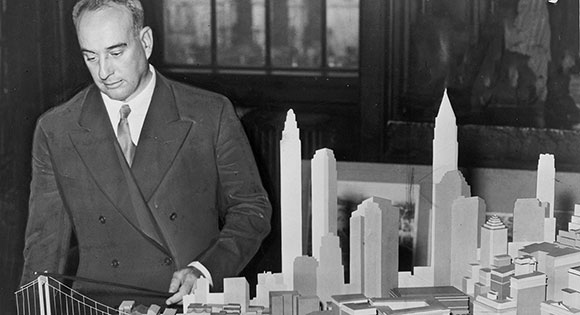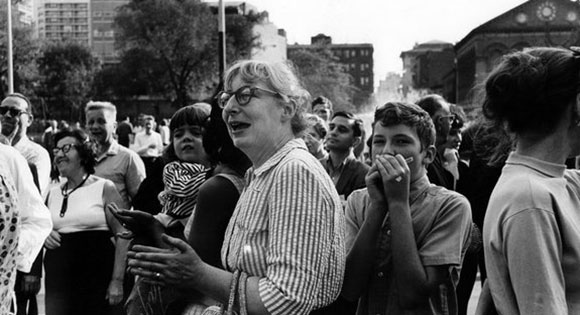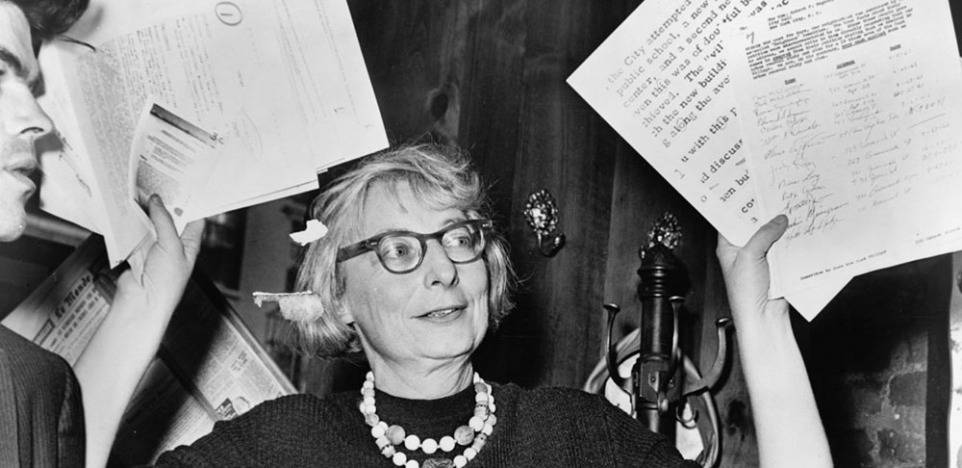Citizen Jane: Battle for the City is a wide-ranging and immensely dramatic documentary that will inspire an urban fervor within all who see it. The film, directed by Matt Tyrnauer, maps the vituperative skirmishes and heavy duty battles launched by Robert Moses, a New York City wheeler and dealer whose dominance as a city planner and "Master Builder" stretched from the 1930s to the 1960s. He incarnated a "top down" vision for urban renewal animated by large government funding and corporate involvement in the "upgrades" of slums into high rise-housing complexes. Moses characterized poor and drug-ridden neighborhoods as cancerous areas which must be destroyed. In their place went large "projects." When these housing units turned into crime-ridden areas, worse than what they had replaced, they were torn down; in several scenes we see these old buildings blown to smithereens.
This construction czar was also a believer in urban utopianism that celebrated cars. He along with Le Corbusier, the Swiss-French architect and urban planner, advocated progress based on super-highways. They both had a fondness for efficient buildings and an abhorrence for chaos and messiness. Missing in all of Moses's projects was a respect for the daily life and interactions of city-dwellers, their informal meetings on stoops and sidewalks, and their pleasure in the diversity and differences of street activities.

Jane Jacobs, in contrast, was a formidable defender of the city. Her pioneering 1961 book The Death and Life of Great American Cities presented the view that urban areas "have the capability of providing something for everybody, only because, and only when, they are created by everybody." Jacobs nurtured her anthropological view of the city in articles for Vogue and other publications.
By the time she reached middle-age, this bohemian activist had come to cherish city life and its old architecture. She believed that packed streets with citizens watching activities from the windows of low floors apartments were the best assurances of safety. Jacobs was ready, willing, and able to do battle with Moses in 1959 when he proposed to stretch New York City's Fifth Avenue through Washington Square Park, basically destroying a popular spot where musicians played to crowds, chess players pondered their next moves, parents strolled with their kids, and dogs frolicked near the water fountain.

When her own neighborhood, the West Village was slated to be destroyed for an urban renewal project, Jacobs organized protests by residents, who taped X's to their sunglasses to mimic the X's on windows of condemned buildings. After witnessing the catastrophic consequences of Moses's Cross-Bronx Expressway, protesters were able to prevent a lower Manhattan expressway which would have destroyed the cast-iron district now known as Soho.
One of the many take-aways from this edifying documentary is that cities can be reflections of our better selves. Generations of planners, engineers, politicians, and land developers have — like Moses — taken a wrong turn on the road of humanizing urban dynamics. Jane Jacobs' legacy is the determination of many city dwellers to reinvent these places so that people can experience better, stronger, and freer lives. She was right on target when she proclaimed that in the metropolises of the future, people — not cars — must take priority.
